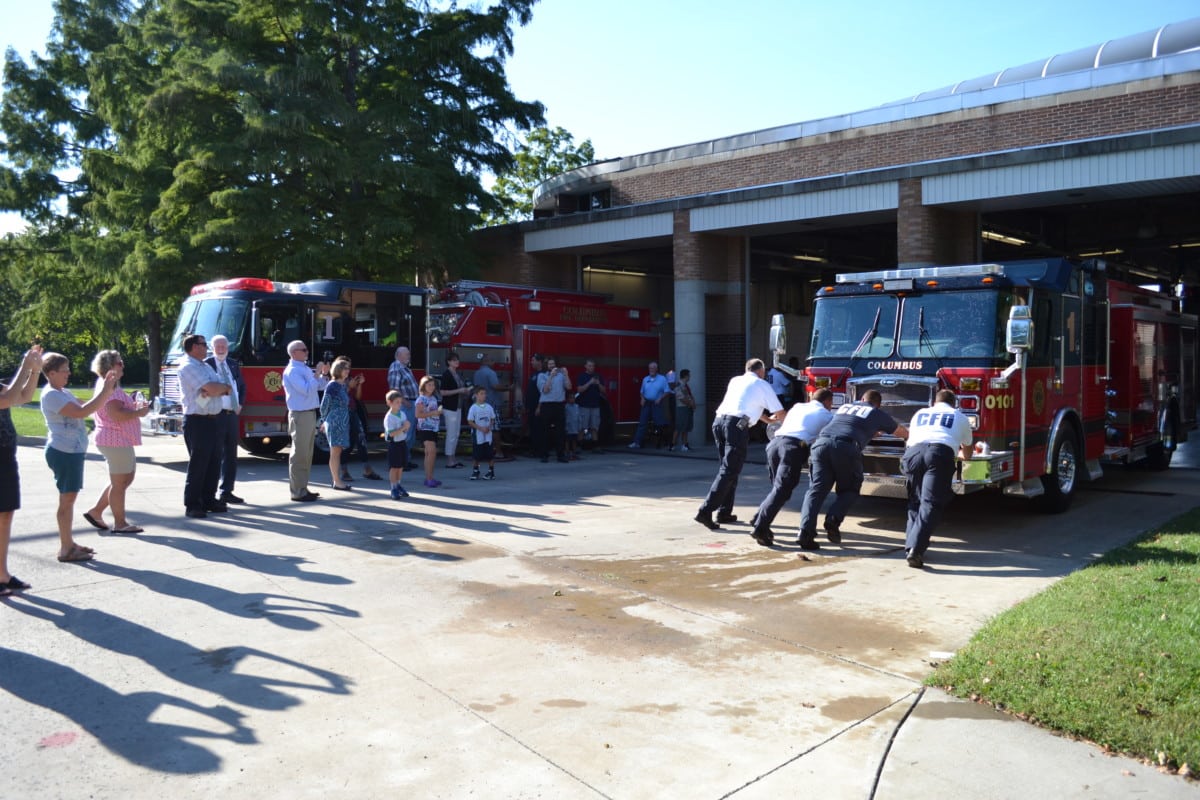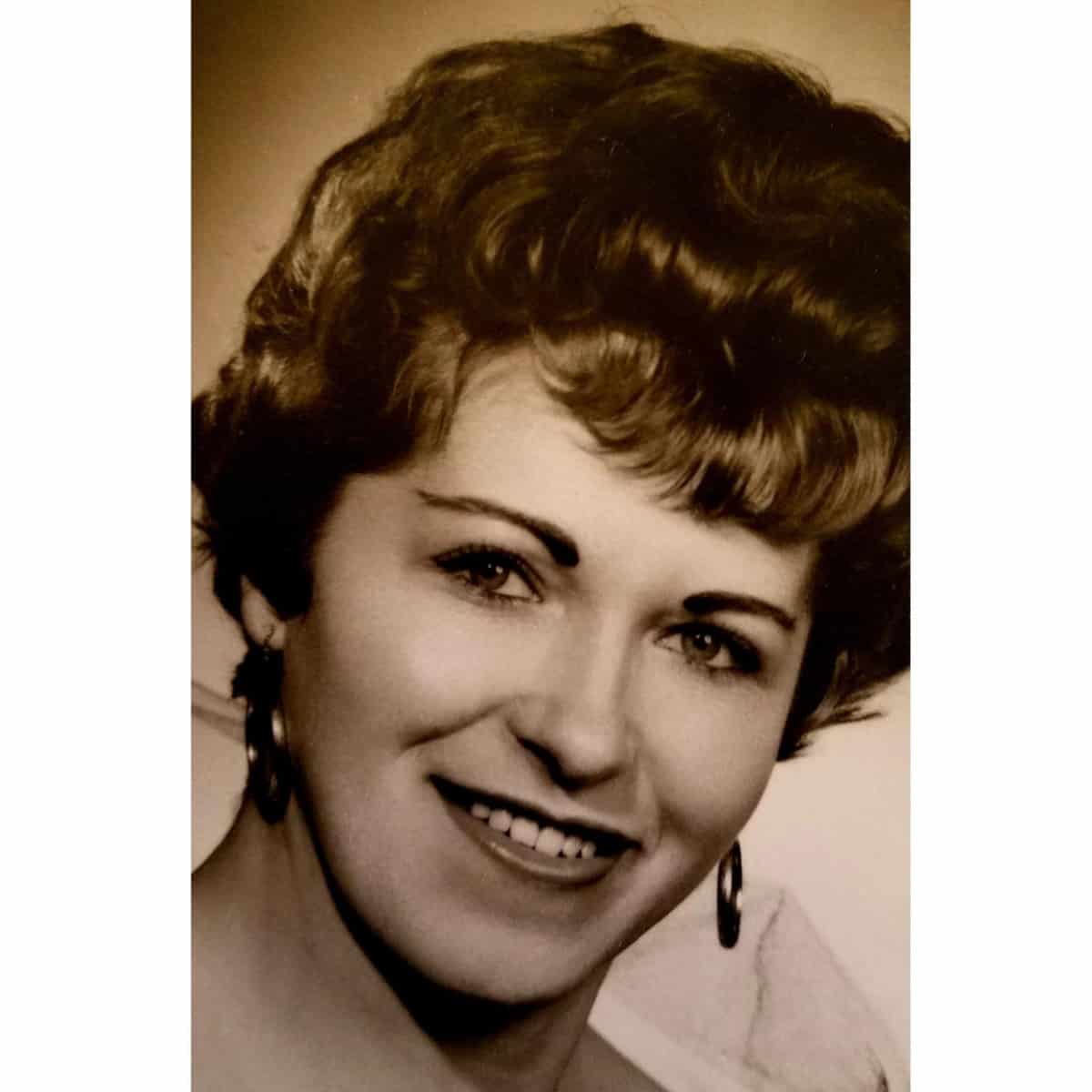As birthdays go, reaching 100 is an opportunity to pause and look back.
But leaders at Columbus Regional Hospital will also be looking forward to the next 100 years as they celebrate a century of taking care of patients — on the Feb. 6 date itself and throughout the anniversary year.
While reflecting on the milestone, Jim Bickel — president and CEO of Columbus Regional Health, a Columbus-based network of health care providers — wondered a bit what local officials who founded Bartholomew County Hospital in 1917 might think of what the facility has become today.
It is a community-focused, regional referral health care facility serving a 10-county area, offering specialized care that is more often found in much larger metropolitan areas.
[sc:text-divider text-divider-title=”Story continues below gallery” ]
“I look back and think about the people (in 1917) that didn’t know what the hospital was about, what it was used for.
“I think it really punctuates how far we’ve come over the years,” Bickel said.
A decision by the Bartholomew County Medical Society to pursue building a public hospital 100 years ago showed a great deal of foresight, Bickel said.
When it opened, Bartholomew County Hospital had an average of 25 patients a month. Records show that 351 patients were treated in 1917.
Today, the local hospital system serves about 250,000 patients each year.
In 2016, Columbus Regional Hospital debuted a new cancer treatment center, followed by the opening of a new emergency department, part of a $30 million investment in health care service upgrades. With state-of-the-art equipment upgrades made at the hospital, Bickel said patients from Indianapolis and Cincinnati are traveling to Columbus for treatment.
Bickel, who came to the hospital system about 25 years ago, said one of the things that attracted him to the organization was where leaders saw the hospital evolving.
That included moving from a predominately county-based facility to a regional one.
“That really showed some vision,” he said. “That whole transformation from county hospital to this regional referral center to me was a very profound milestone.”
A new century
As Columbus Regional Health enters its second century, the challenges are far different and more complex than when the county borrowed $100,000 to build its first hospital, one of the first county hospitals in Indiana. Even though it seems counter intuitive for a facility built to treat illness, Bickel said the ultimate purpose of Columbus Regional Health is to help people from all walks of life live healthier lives. In addition to providing hospital care, the healthcare system is focused on being a good community partner in all its programming and services, as a way to help people take accountability for their health. That means getting involved in socioeconomic issues that people face in the community which affect their health, Bickel said.
One example is introducing smoking-cessation classes to help people change habits that can lead to serious illnesses.
“How do we play a role in helping to support those things that will drive the community to be as healthy as possible?” he asked.
After attending a Third House session about pre-kindergarten services Jan. 23, Bickel said he sees the challenges in the economic circumstances of the community’s residents and their ability to stay healthy.
“Health care and education are so intrinsically linked,” he said. “We have to play a role in that … We’ve seen the share of health care expenditures increasingly go higher and higher as part of the gross national product and the like, almost to the point it seems insurmountable. We have to get to some of these other root causes that health care traditionally hasn’t had a role in.”
Taking a pro-active stance, Bickel sees the hospital system’s role as making it as easy as possible for people to live the healthiest life possible.
“It”s not to intervene or to tell people how to lead their lives,” he said. “We know there are real barriers and challenges out there.”
Helping individuals overcome such obstacles reduces the burden of health care costs and is good for the community’s health in general, he said.
Seamless care
The hospital system has another goal for the future — creating a seamless, integrated health care structure within the region to improve care and keep costs down. That has resulted in Columbus Regional Health looking at primary care health providers not only as community partners, but as hospital acquisitions. “We know across the country there is a shortage of primary care physicians, so we are making deliberate investments in primary care for Columbus Regional Health. Our physician practice — our medical group — continues to grow. We’re over 100 providers that are now employed by the health system and we’re seeing that trend continuing, not only here in Indiana but across the country.”
Acquiring the practices and doctor’s services provides a much stronger tie to the health system, Bickel said, describing that trend as a monumental shift from 30 to 40 years ago when independent physicians were the primary healthcare business model.
That trend continues to develop because of the growing burden on independent physicians to keep up with new technology, such as electronic medical records and infrastructure investments.
“We want the physicians that are primary care and their office practices part of the system communicating with us in an effort to reduce the fragmentation that’s out there,” Bickel said.
What happens in those physician offices and clinics needs to be shared with the hospital system so the patient has a seamless transition from doctor’s office, to hospital to discharge home, he said.
Technological challenges are looming for the hospital system as well, as even Bartholomew County government is considering adding telemedicine to its insurance plan — which allows patients to communicate with doctors over the internet rather than in person.
“It’s on our radar to look at,” Bickel said of telemedicine.
While patient convenience is important, Columbus Regional Health will want to make sure telemedicine is being used in the most appropriate clinically effective way, he said.
“Physicians will say it probably has its place,” Bickel said, while recognizing that telemedicine is not appropriate for all medical consultations.
“Those are things we have to work together as a system to figure out,” he said.
Attractive system
Many of the physicians who practice in Bartholomew County and refer patients to Columbus Regional Hospital were first attracted to Columbus initially, said Dr. Thomas Sonderman, the system’s vice president and chief medical officer. After learning about the city’s architectural heritage and experiencing its beauty and the inviting community, Sonderman said many physicians like what they see. Another factor, too, is an evaluation of how the physician’s practice fits into to the health care landscape, Sonderman said.
Are all the needed specialties present? Is there coordination of care? Those are questions that physicians considering Columbus will have, he said.
When speaking to medical recruits, Sonderman said the hospital’s independence from the state’s major medical franchises is appealing.
Knowing that Columbus Regional Health is run independently gives physicians a confidence level that decisions are being made locally, and they can have some influence in those decisions, he said.
“Medical care is a team sport,” Sonderman said.
The recent addition of the new Cancer Care Center and new Emergency Department are also signs to physicians that the hospital wants to be in the forefront when considering capital improvements and technology.
The latest upgrades show concrete signs that Columbus Regional Hospital is investing in its future, something physicians also consider when choosing where they want to practice, he said.
Full coverage
When Bickel arrived in Columbus in 1991, the cancer care initiative was well underway. Looking back, he said that commitment was putting a “stake in the ground” for cancer services locally. As for the emergency department, expansion was mandated by a patient load that was exploding beyond the former facility’s capabilities.
The former emergency department was sized to handle 20,000 to 25,000 patients a year, but was trying to handle nearly double that capacity when the system created a state-of-the-art facility on the hospital’s east side.
Bickel said the emergency department’s usage rate was in part due to a change in patient habits and mindsets.
Emergency rooms, as they were called, were once just used for acute emergency care. But today’s patients are now utilizing hospital emergency departments for routine health procedures and health care — for matters that could be handled in an urgent care center or primary care physician’s office, Bickel said.
The patients recognize the convenience of emergency departments being open 24 hours a day, 365 days a year, he said.
“That’s not the most cost-effective side of care. We know that,” Bickel said.
Now the hospital must work upstream so over-utilization of emergency departments can decrease, he said.
“But for right now, the volume (in the emergency department) has been on a continual upward trajectory,” Bickel said.
Columbus Regional Hospital’s new emergency department was built so that some of its space could be repurposed if eventually it isn’t needed for emergency care, he said.
“I don’t know that we will ever see that. But it’s one of the things we are thinking about.”
Bickel pointed to the entire spectrum of Columbus Regional Health services — oncology, cardiovascular, surgical — and how they work together to help patients receive care close to home.
In the early 2000s, the hospital system launched into providing open-heart and bypass surgeries after bringing a cardiac program to the region.
Columbus Regional Hospital has a catheterization lab, with not just diagnostic, but interventional capabilities.
“You have a blockage in your artery, we go into the cath lab, open that up, put in a stent,” Bickel said. “That service is important in this region because we’re the only interventional cath lab outside of the major metropolitan areas … the speed in which you get into the cath lab and get that vessel opened up, the better the outcome for the patient.”
Columbus Regional Health has partnered with IU Health to provide cardiac surgery services at the hospital, tapping into that health system’s bench depth and clinical expertise — without patients having to travel to a metropolitan area, Bickel said.
Future plans
Zack Ellison, who leads the Columbus Regional Health board of trustees, said the county continues to focus on investing in the latest technology and capital improvements for the hospital. Describing Columbus Regional as the crown jewel for the county and Columbus, Ellison said the nonprofit hospital has continued to be economically healthy enough to provide money that can be re-invested in the hospital itself and its technology. He credited management of the hospital over the years with its continued success, along with the county’s commitment to keep it locally operated.
“Look around to the counties around us, and you will see county hospitals being sold,” he said. “I’m proud of the community for keeping our hospital a county-owned hospital,” Ellison said.
When speaking to new employees in a group, Bickel said he always makes sure to talk about the hospital system’s values and how they are demonstrated in the community.
“It’s what makes Columbus, Columbus — everybody pitching in. It’s great to pause and celebrate that,” Bickel said. “And we’re looking forward to the next 100 years.”
[sc:pullout-title pullout-title=”Columbus Regional Health milestones” ][sc:pullout-text-begin]
1915: Bartholomew County bonds for $100,000 to construct a new hospital north of 17th Street and east of Haw Creek in Columbus.
1917: The three-story Bartholomew County Hospital opens with 32 bedsand 25 employees. Its first patients are admitted on Feb. 6.
1930: The Hattie S. Kirkpatrick Memorial Nurses Home, which is housing for nurses, is established on the northwest side of the hospital.
1945: An addition on the south wing is added, increasing hospital capacity to 75 beds.
1949: Bartholomew County Commissioners approve plans for a $780,000 expansion, increasing capacity to 129 beds.
1953: The hospital completes a $1.7 million expansion with additions including two three-story wings; the number of beds is expanded to 142.
1959: The hospital expands to add 39 more beds, remodeling the second floor and emergency areas at a cost of $911,000.
1968: $3.7 million in bonds are issued to build Murphy Pavilion, a five-story in-patient unit of 108 beds in honor of former administrator Olive Murphy, who retired in 1967 as hospital administrator after 28 years of service.
1972: The hospital opens a 10-bed intensive coronary-care unit.
1973: The hospital renovates its children’s ward.
1976-1978: Plans are announced for a $7.2 million expansion adding two floors to the Murphy Pavilion and ambulatory services, including radiology and laboratory.
1979: The hospital partners with Lifeline Helicopter in Indianapolis to provide local service.
1981: Labor and delivery rooms are established on a pilot basis.
1983: Patients are admitted to a new psychiatric ward.
1984: The hospital reclassifies as a regional referral center and a paramedic program begins.
1988: Bartholomew County Hospital and Quinco Consulting Center affiliate to expand and improve mental health services.
1990: Ground is broken on a $40 million expansion and renovation project which includes a cancer treatment center and birthing center.
1991: The hospital adopts a smoke-free policy.
1992-1994: Bartholomew County Hospital changes its name to Columbus Regional Hospital and celebrates completion of a renovation project that added new pavilions, front lobby, gift shop, dining room, physicians office building and renovations and additions to the main patient tower. The Cancer Center opens.
1995: The Breast Health Center opens in the Haw Creek Medical Office Building, and PromptMed Immediate Care Center opens on 25th Street.
1996: Volunteers in Medicine clinic opens offering health care to the uninsured and underinsured in Bartholomew County.
2001: The hospital’s website is launched.
2004: A Picture Archiving and Communications System is implemented and a new linear accelerator begins delivering radiation therapy in cancer treatment. The North Medical Office Building is built. Our Hospice of South Central Indiana opens an inpatient facility on the east end of the main hospital campus.
2008: Plans are announced for a new emergency department and patient tower. A record flood closes the hospital for five months. All employees remained on paid staff during the closure and the hospital coordinated patient care for residents in the area through surrounding regional health systems.
2011: A flood wall is build around the entire main hospital campus. The health system changes its name to Columbus Regional Health.
2012: Surgical Services begins using the da Vinci Si Robotic Surgical System.
2013: WellConnect opens in downtown Columbus. Columbus Regional Health becomes an official cosponsor of the Mill Race Marathon.
2014: Inspire Health Partners is created by a partnership through Columbus Regional Health, Schneck Medical Center and SIHO. Plans for an expanded Cancer Center and new Emergency Department are announced.
2016: The Cancer Center expansion is completed with state-of-the-art radiation equipment and physicians. The new Emergency Department is double the size of the previous facility. Volunteers in Medicine changes its name to VIMCare Clinic and opens in the former hospital emergency department space.
— Source: Columbus Regional Health
[sc:pullout-text-end][sc:pullout-title pullout-title=”Physician practices under CRH umbrella” ][sc:pullout-text-begin]
Columbus ENT and Allergy
Columbus Family Medicine
Columbus Gynecology and Adult Medicine
Columbus Internal Medicine
Columbus Pediatrics
Southern Indiana Nephrology and Hypertension
Columbus Regional Physiatry
Hospital Care Physicians
Southeastern Indiana Behavioral Services
Southeastern Indiana Cancer Care
Doctor’s Park Family Medicine
Kavelman Family Medicine
Koopman Family Medicine
Nashville Family Medicine
Neurology and Sleep Sciences
OB/GYN Associates of Columbus Regional Hospital
PromptMed
Rau Family Medicine
Sandcrest Family Medicine
Southern Indiana Heart and Vascular
Southern Indiana OB/GYN
VIMCare
— Source: Columbus Regional Health
[sc:pullout-text-end][sc:pullout-title pullout-title=”Coming Feb. 5″ ][sc:pullout-text-begin]
A magazine detailing Columbus Regional Hospital’s 100-year history will be included in The Republic on Feb. 5.
The section, “One Hundred Years of Caring,” includes a look back over the century of care and provides a chapter on where the health system is headed in the future.
[sc:pullout-text-end][sc:pullout-title pullout-title=”Columbus Regional Hospital by the numbers” ][sc:pullout-text-begin]
Then
32: Number of beds in Bartholomew County Hospital, which opened on Feb. 6, 1917.
25: Average number of patients admitted monthly in 1917.
351: Patients treated in the hospital’s first year.
$69,442: Final cost for the first hospital building.
Now
250,000: Number of patients Columbus Regional Health cares for each year.
2,500: Columbus Regional Health employees.
$317 million: Annual operating expenses for the health system.
— Source: Columbus Regional Health
[sc:pullout-text-end]













